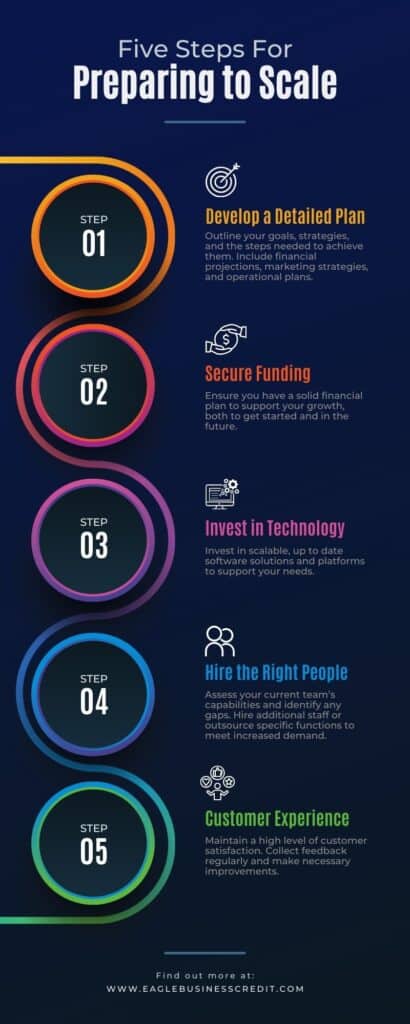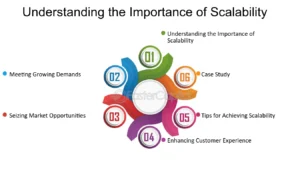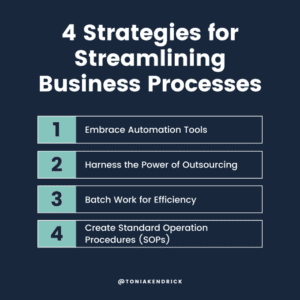Revenue Growth Strategies for Scaling Your Business
Growing revenue is crucial for businesses looking to scale effectively. Without a solid revenue growth plan, businesses can stagnate or become overwhelmed by increasing costs. In this article, we will explore practical strategies for driving revenue growth and positioning your business for sustainable success.
Introduction: Why Revenue Growth is Critical
Revenue growth is the backbone of scaling a business. Whether you’re looking to expand your operations, hire more staff, or invest in new technology, increasing your revenue ensures that your business can handle the financial demands of scaling. Let’s dive into the key strategies that can help you achieve consistent revenue growth.
Key Strategies for Driving Revenue Growth
1. Optimize Pricing Strategies
Pricing is a powerful lever in revenue growth. Assess your current pricing model and explore whether tiered pricing, subscription models, or dynamic pricing can increase your profitability. Ensure that your pricing is aligned with the value you offer to customers.
Example: SaaS businesses often benefit from offering tiered pricing plans that cater to different customer needs, such as basic, premium, and enterprise levels.
2. Expand Your Product or Service Offerings
Diversifying your product or service line can help you capture new customer segments and increase average order value. Introduce complementary products or services that align with your current offerings to deepen relationships with existing customers.
Example: A software company could introduce training programs or specialized tools that enhance the core product, providing added value and increasing customer loyalty.
3. Leverage Upselling and Cross-Selling
Upselling encourages customers to purchase a more premium product, while cross-selling suggests complementary items. Both techniques can increase the average transaction value and overall revenue.
Key Tip: Train your sales team to identify opportunities for upselling and cross-selling during customer interactions.
4. Improve Customer Retention
It’s often more cost-effective to retain existing customers than acquire new ones. Implement loyalty programs, offer exceptional customer support, and regularly engage with your customer base to reduce churn and increase repeat purchases.
Example: Offering discounts, rewards, or VIP services to long-term customers can help boost loyalty and retention.
5. Expand into New Markets
One of the most direct ways to increase revenue is by entering new markets. This could be geographic expansion, targeting new industries, or selling your products through new channels, such as online marketplaces or partner platforms.
Key Tip: Research potential markets thoroughly to understand the demand, competition, and cultural nuances.
6. Refine Your Sales Funnel
An efficient sales funnel can drastically improve conversion rates. Audit your current sales process to identify any bottlenecks or leaks and optimize it for smoother customer journeys.
Example: Automating follow-up emails and using CRM systems like HubSpot or Pipedrive can ensure that no leads fall through the cracks.
7. Leverage Data-Driven Marketing
Utilize data to fine-tune your marketing campaigns and allocate resources to the most effective channels. Platforms like Google Analytics and SEMrush provide valuable insights into customer behavior and campaign performance, helping you make informed decisions.
Example: Use customer segmentation to target specific audiences with personalized marketing efforts, driving higher engagement and sales.
Conclusion: Focus on Long-Term Revenue Growth
While short-term revenue boosts are helpful, long-term growth is built on sustainable strategies such as optimizing pricing, expanding offerings, improving customer retention, and entering new markets. By leveraging data and refining your sales process, your business can achieve steady and scalable revenue growth.
FAQs Section
1. How can I determine the right pricing strategy for my business?
- Evaluate your target audience, competitors’ pricing, and the perceived value of your offerings. Consider experimenting with different pricing models such as subscription plans or tiered pricing.
2. What is the best way to retain customers?
- Providing excellent customer support, offering loyalty programs, and engaging with customers regularly are key ways to improve retention and reduce churn.
3. How does upselling differ from cross-selling?
- Upselling involves encouraging a customer to purchase a higher-end product, while cross-selling suggests complementary products related to their original purchase.
4. Should I prioritize expanding into new markets or optimizing existing ones?
- It depends on your current market saturation and available resources. Optimizing your existing market should be the priority, but expanding can offer significant growth opportunities when done strategically.
5. How can I improve my sales funnel?
- Streamline the process by removing unnecessary steps, integrating automation tools, and providing consistent follow-up to leads. Monitoring and adjusting based on performance metrics is key.
Top Tools to Simplify and Scale Your Business
- HubSpot
- A robust CRM platform that helps businesses manage customer relationships, automate marketing, and streamline sales processes.
- QuickBooks
- A popular accounting software for tracking revenue, expenses, and generating financial reports.
- Google Analytics
- A comprehensive tool that provides insights into customer behavior, allowing businesses to optimize marketing efforts and improve conversion rates.
- SEMrush
- A leading platform for SEO, content marketing, and competitive analysis, helping businesses grow their online presence and attract new customers.
- ActiveCampaign
- A marketing automation tool that helps businesses nurture leads, create personalized email campaigns, and improve customer retention.
Keywords: revenue growth strategies, business scaling, customer retention, pricing optimization, upselling techniques, expanding into new markets, marketing automation tools







